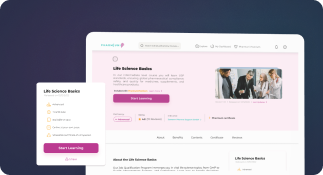QMS ISO 9001
Definition
QMS ISO 9001 refers to the internationally recognized standard for Quality Management Systems (QMS), established by the International Organization for Standardization (ISO). The most current version, ISO 9001:2015, outlines the criteria for a QMS and is applicable to any organization, regardless of size or industry. In the pharmaceutical, biotechnology, and medical device sectors, ISO 9001 provides a framework to ensure consistent quality, regulatory compliance, and customer satisfaction.
Detailed Explanation
What Is ISO 9001:2015?
ISO 9001:2015 is the latest revision of the ISO 9001 standard, which defines the requirements for a Quality Management System. It is designed to help organizations ensure that they meet the needs of customers and other stakeholders while complying with statutory and regulatory requirements related to a product or service. The standard is based on seven quality management principles:
- Customer focus
- Leadership
- Engagement of people
- Process approach
- Improvement
- Evidence-based decision making
- Relationship management
Importance in the Pharmaceutical and Life Sciences Industry
In highly regulated industries like pharmaceuticals, biotechnology, and medical devices, a robust QMS is essential for maintaining compliance with Good Manufacturing Practices (GMP), Good Laboratory Practices (GLP), and other quality-related regulations. While ISO 9001 is not a regulatory requirement, it complements regulatory frameworks by providing a standardized approach to quality management.
For example:
- Pharmaceutical companies use ISO 9001 to support GMP compliance and maintain documentation integrity.
- Medical device manufacturers often implement ISO 9001 alongside ISO 13485, which is specific to medical devices but built upon the ISO 9001 structure.
- Biotech firms benefit from the risk-based thinking promoted by ISO 9001 to manage product development and clinical trial processes.
Key Components of a QMS under ISO 9001
To achieve ISO 9001 certification, organizations must implement and maintain a QMS that includes:
- Documented procedures and records
- Quality policy and objectives
- Internal audits and corrective actions
- Risk management and continual improvement
- Management review processes
- Customer feedback mechanisms
Benefits of ISO 9001 Certification
Certification to ISO 9001 provides several strategic and operational benefits:
- Improved product quality and consistency
- Enhanced customer satisfaction and trust
- Better alignment with regulatory expectations
- Increased operational efficiency through process standardization
- Market access and competitive advantage
ISO 9001 vs. Other Quality Standards
While ISO 9001 is a general quality management standard, other sector-specific standards may also apply:
- ISO 13485: Specific to medical devices, more stringent in documentation and regulatory alignment.
- ICH Q10: International guideline for pharmaceutical quality systems, aligned with ISO 9001 principles.
- 21 CFR Part 820: U.S. FDA Quality System Regulation (QSR) for medical devices, similar in intent to ISO 9001.
Implementation and Certification Process
Organizations seeking ISO 9001 certification typically follow these steps:
- Gap analysis against ISO 9001 requirements
- Development and documentation of QMS processes
- Training of personnel and implementation of controls
- Internal audits and management reviews
- Certification audit by an accredited third-party body
Once certified, organizations must maintain their QMS and undergo periodic surveillance audits to retain certification.



